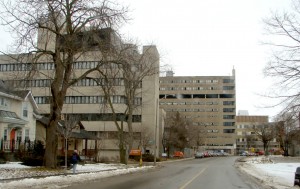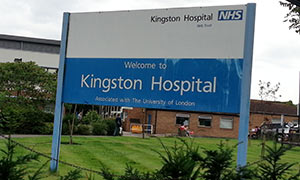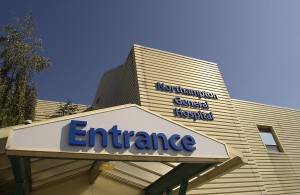By Tony Backhouse, Business Development Manager – Healthcare Division, SynApps Solutions
“It is perfectly possible to improve and sustain the NHS over the next five years in a way that the public and patients want.
“But to secure the future that we know is possible, the NHS needs to change substantially.”
These are the words of no less a figure than Simon Stevens – head of NHS England, so very much a figure whose ideas on the best ways to take the health service forward we need to listen to.
Stevens made the statement as part of his landmark October ‘Five Year Forward View’ vision for what the NHS has to do to survive.
Note my emphasis. Not ‘would like to do.’ Not ‘is asking the taxpayer nicely for.’
No, Stevens said ‘needs to do’ – in order to survive.
The document lays out many different policy, social, structural and indeed cultural changes that, not just the NHS as an organization, but we as users of it need to start making – from looking after our health better to that long-awaited health and social care integration we have been hearing about for so long finally kicking off.
But Stevens is also famous for being an NHS leader with not just real knowledge of ICT, but a deep conviction of its central place in the revolution he wants to spark in the British healthcare system (“We will invest in new options for our workforce, and raise our game on health technology… unless we reshape care delivery, harness technology, and drive down variations in quality and safety of care, then patients’ changing needs will go unmet” being just two of the many remarks he makes on the topic in the Five Year Forward View).
Well, we’ve all heard similar statements before. Many of you reading this will have some experience with the National Programme for IT (NPfIT), to name the most notorious example of what can happen when ambitious, top-down technology-led change is imposed on the NHS. (The NPfIT was an initiative by the Department of Health in England to move the NHS in England towards a single, centrally-mandated electronic care record for patients and to connect 30,000 GPs to 300 hospitals, providing secure and audited access to these records by authorised health professionals.)
I use the word ‘imposed’ deliberately. Stevens in this document lays out what happened before when Whitehall says what Trusts need to do without taking enough consideration of their specific needs.
But this time, he says, it’s going to be different. Which is where technologies such as those being developed by SynApps Solutions are going to really start helping you.
The Clinical Content Store: a major SynApps development
What do I mean? Stevens, acknowledging the issues that have plagued attempts at getting more tech into the NHS before, makes a very significant statement that I want to draw your attention to: “Nationally we will focus on the key systems that provide the ‘electronic glue’ that enables different parts of the health service to work together. Other systems will be for the local NHS to decide upon and procure.”
In other words, we (NHS England) will put some systems out there for you – but the rest, the ones that you know work and can source and implement the way that makes sense for your hospital, is down to you. How can local IT do this? They need to strip out old IT and use those savings to part fund the right systems that will share information in the right way. Step forward, just such a system –the SynApps Clinical Content Store.
You will be aware that SynApps, working with key partners like EMC, has been building a great system for helping Trusts start to better manage complex, large image files, which they needed to do as the old National Programme central radiology contracts started to wind down. This is our VNA, Vendor Neutral Archive (see, for example, our blogs on here from last year like ‘WHY DOES VNA MATTER – AND HOW DO YOU IDENTIFY IT?’ and ‘‘ROYAL’ APPROVAL FOR A VNA-BASED EPR?’).
The VNA has been doing some fantastic work out there. But we haven’t been sitting on our laurels – far from it. Instead, we have been building out the VNA and adding other functionality to it to create this new CCS, or Clinical Content Store – a place to bring together all kinds of information at the local level to help create a true Electronic Patient Record, from the bones of all the old systems and alongside the new. A place to start building powerful, flexible ways to not just ‘go paperless’ but to, at last, integrate the structured and unstructured digital and non-digital patient data needed.
In the next couple of blogs, I’m going to tell you about the CCS, why it matters, how we see it starting to help organisations just like yours. We will also talk to this important theme of ‘national glue’ provided by NHS IT systems buttressed by flexible, local systems.
I think it’s going to be a fantastic journey. But it’s also hard to think of a more important IT project: one that means you will play a core role in the saving of the NHS.
Are you on board?
Tony joined SynApps in April (https://www.synapps-solutions.com/tag/recruitment) to help further build our success in this sector
We are currently offering a free consultative study to scope out the potential of CCS to meet your need, but be aware it is time-limited – so start talking to us today!
Please – take advantage of the seminar [https://www.synapps-solutions.com/events/addressing-the-twin-challenges-of-retiring-applications-while-increasing-access-to-patient-information] on Thursday 29th January at 12.30pm at the London Chamber of Commerce, EC4R 1AR, and find out more about the Clinical Content Store and how it can help you meet your EPR challenge.




